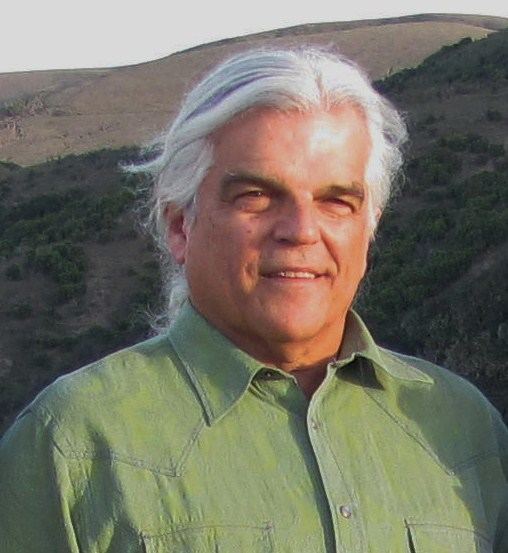Name Jaime Jackson | Role Author | |
 | ||
Books Paddock Paradise: A Guide to, The Natural Horse: Le, Horse Owners Guide to, The Natural Trim: Prin, Founder: Prevention and Cure | ||
Jaime jackson demonstrates sequencing in lompoc ca april 30 2013
Jaime Jackson (born 1947) is a 40+ year veteran hoof care professional, lecturer, author and researcher on wild and domestic horse hooves. He is best known for the practice of natural hoof care first written about in The Natural Horse: Lessons from the Wild (1992).
Contents
- Jaime jackson demonstrates sequencing in lompoc ca april 30 2013
- Sequencing for the natural trim with demonstration by jaime jackson
- Early life
- Career
- Paddock Paradise and natural boarding
- References

Sequencing for the natural trim with demonstration by jaime jackson
Early life
Jackson was born (1947) in National City, California, near San Diego. He attended a “two room” schoolhouse built on stilts situated on the shores of still undeveloped Mission Bay. After the Korean War, his family moved north to rural Long Beach near farm land now covered with developments. Later, they moved to the Fountain Valley area of Orange County, where he graduated at Huntington Beach High School in 1965. Jackson was a competitive gymnast on the still rings during the 1960s. He left southern California after high school for San Francisco, where he attended the City College of San Francisco. In 1967 he was drafted into the U.S. Army during the height of the Vietnam war. In late 1969, Jackson narrowly escaped death as he hastily exited a Huey helicopter, running into the rear propeller as it was coming to a slow stop. Knocked unconscious, he awakened with only a broken nose nose and cracked front tooth. Returning stateside in early 1970, Jackson completed a degree in chemistry but, shaken by his military deployment and awareness of the tenuousness of life, made the decision to leave academia and plans to attend medical school, pursuing instead an independent life with horses.
Career
The Natural Horse was based upon Jackson's studies from 1982 until 1986 of the Mustang in its natural environment in the Great Basin of the western United States. Jackson discovered that not only did wild horses live longer than domestic horses, but they also suffered none of the hoof maladies that plague those kept in 'captivity', notably navicular syndrome and laminitis. Following his research, he began experimenting on the hooves of domestic horses to find an effective way to trim their feet and allow them to remain barefoot and strong. In 1990 he stopped all shoeing of horses and instead began to advocate for the wild-horse trim. He believed that even horses with severe hoof conditions deemed incurable by veterinarians and farriers could, over time, be restored to good health through barefoot trimming and natural horse care (i.e., naturalization of the diet and boarding situation).
In the early 2000s, Jackson created the American Association of Natural Hoof Care Practitioners (AANHCP), a non-profit organization devoted to education, training and certification of the natural hoof care practitioner. Since then, the organization has expanded its scope and has changed its name to the Association for the Advancement of Natural Horse Care Practices. Jackson is its executive director.
The guiding principles to natural hoof care, according to Jackson, are:
- Leave that which should be there naturally.
- Take only that which should be worn away naturally in the wild.
- Allow to grow that which should be there naturally but is not due to unnatural forces.
- Ignore all pathology.
Within a few years, a large, worldwide barefoot movement formed to promote the healthy benefits of barefootedness and natural horse care. According to veterinarian Robert Cook, Professor of Surgery Emeritus at Cummings School of Veterinary Medicine at Tufts University in Massachusetts, Jackson provided "indisputable evidence, available for more than a decade, disproving the claim that domesticated horses need shoes."
Jackson's book, Paddock Paradise: A Guide to Natural Boarding (2006), further advances the concept of using natural horse care to restore and maintain optimal health.
Jackson resides in Central California and maintains an active trimming and rehabilitation clientele.
Paddock Paradise and natural boarding
This natural horse boarding concept was introduced by Jackson in his book, Paddock Paradise, A Guide to Natural Horse Boarding (Star Ridge Publishing). The premise of a natural boarding model is to provide safe, humane living conditions that use the horse's natural instincts to stimulate and facilitate movement and other behaviors that are essential to a biodynamically sound horse.
Numerous studies of wild horses show that they thrive physically, mentally and emotionally if kept in an environment that takes into consideration the most basic elements of their natural world by situating and propelling them into forward movement. According to Jackson, who founded the American Association of Natural Hoof Care Practitioners (AANHCP) in 2002, the hoof is adaptively cross-linked to the nexus of natural behavior and movement and can be restored to its native integrity and soundness by putting horses in such a simulated natural environment. This is especially noteworthy given the dismal results of a study published in the November 2000 edition of the American Farriers Journal, which stated that less than 10 percent of the 122 million equines around the world are clinically sound.
Natural horse boarding is unlike a traditional situation with stalls, small paddocks and/or lush green pastures ("founder traps"). It is designed to encourage movement through the creation of a series of paths with a quantity of various stimuli such as strategically placed feeding spots and watering holes that are incorporated within or alongside the track in order to activate curiosity or movement. Natural horse care practices include elements of natural hoof care, encouraging herd mentality, foraging for small amounts of food strategically available throughout the day, maintaining a watering hole near or at the source of drinking water, and behaviors related to horses as prey animals, relative dominance (pecking order), grooming, resting and sleeping behaviors.
